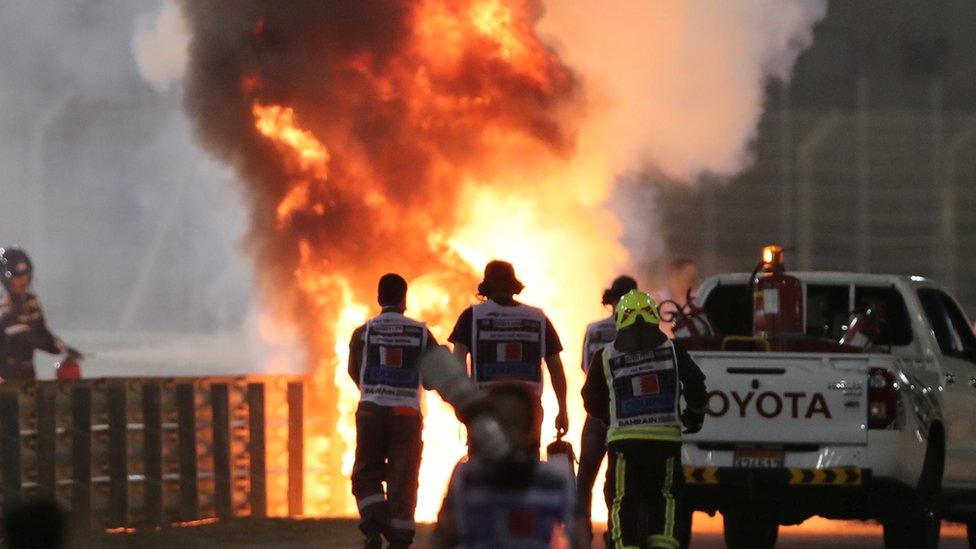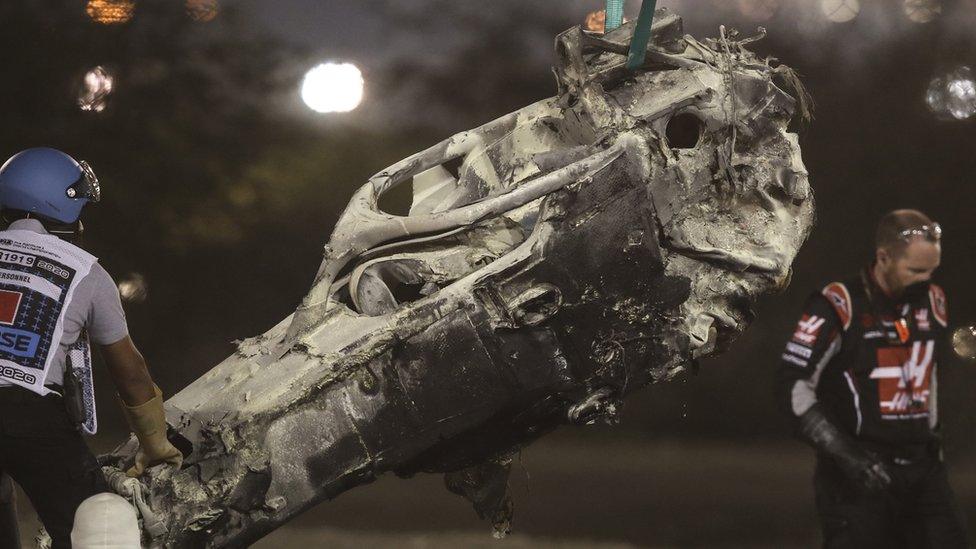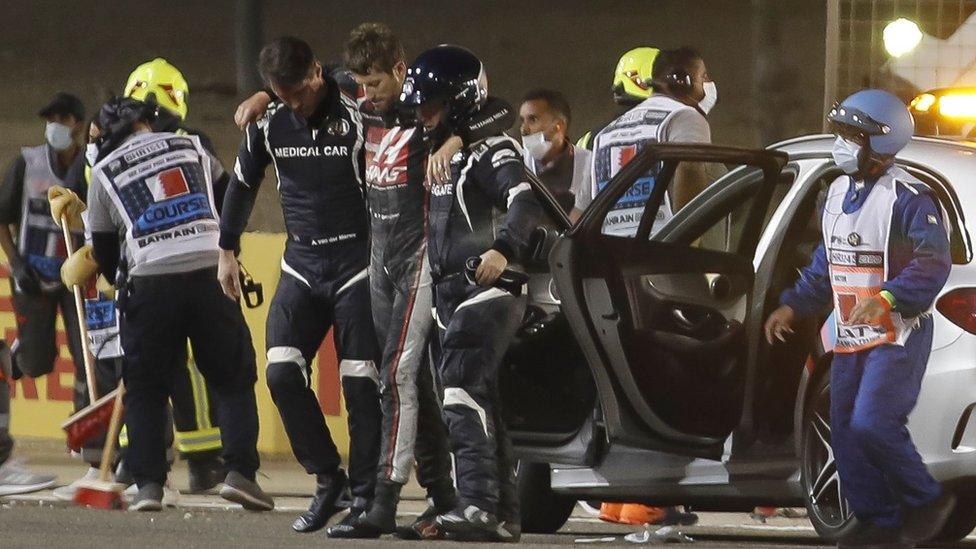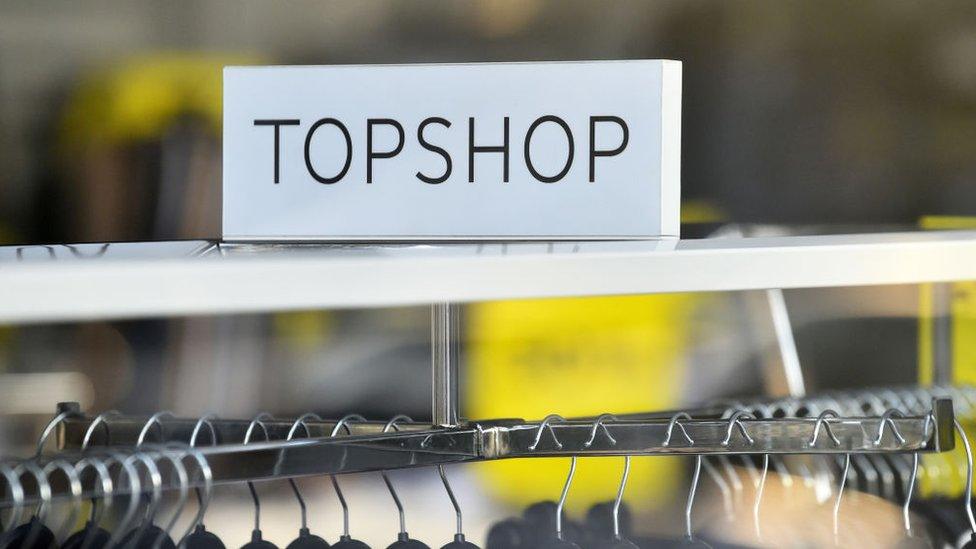Safety features saved F1 driver's life in bad crash
- Published
- comments

There was an extremely dramatic moment in the Formula One this weekend in Bahrain as driver Romain Grosjean was involved in a high speed crash.
However, thanks to a safety device fitted in the car, Grosjean walked away from the crash with only minor injuries including burns to his hands.
The 34-year-old's car split in two and burst into flames after hitting a steal barrier at 140 mph, following a collision with another driver.
Speaking from his hospital bed, Grosjean said a titanium protection halo bar, which is mandatory on all F1 cars, saved his life.
What is halo?

The remains of the Formula One car following the crash
The halo device is a three-pronged titanium protection bar which sits above drivers' heads in Formula One cars.
The safety device has been a required safety feature in F1 since 2018.
The titanium doesn't weigh a lot but it's incredibly strong.
This means that it's able to protect the driver from the impact of a crash even if, like in Grosjean's case, the car splits into two.
However, it wasn't seen as a popular move at first, with drivers including Grosjean speaking out against the technology when it was first introduced.
Former racing stars, including three time F1 champion Niki Lauda said the halo device "destroys the DNA" of race cars and fans of the sport said it was ugly.
Speaking after the crash, Grosjean said: "I wasn't for the Halo some years ago but I think it's the greatest thing that we brought to Formula One and without it I wouldn't be able to speak to you today."
What else helped protect Grosjean?

Grosjean (centre) was helped from the wreckage by a team of medics. He was protected from the flames by his specially made fire-proof suit
Grosjean was also protected by his suit, which is made from a fire proof material called Nomex.
Drivers wearing them can survive temperatures of up to 840 Celsius for 35 seconds.
Grosjean was stuck in the flame engulfed car for 27 seconds before the brave and quick reactions of the safety team with fire extinguishers helped him get free from the car.
An investigation will now take place as to why the car went through the barrier, split into two and caught on fire.
The Bahrain Grand Prix eventually did take place, with Lewis Hamilton winning his 11th race of the season. He's already won this year's championship.
After the crash Hamilton said: "It really hits home. We want safety for everyone and worry for everyone when there is a crash.
"I am really grateful he is safe and was able to get out but it is a real stark reminder of how dangerous this sport is, the speeds we do, and the energy we are carrying."
- Published30 November 2020

- Published26 November 2020

- Published1 December 2020

